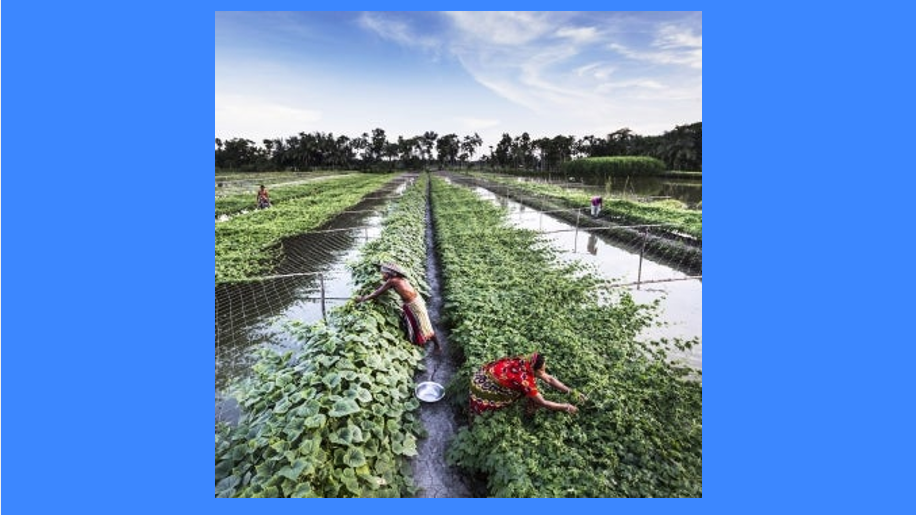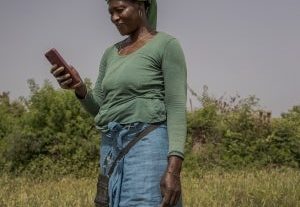[ad_1]
When Malawi suffered a severe drought in 2016, VisionFund Malawi (VFM) used a returnable grant to test and learn the boundaries of a good recovery lending program. The board was initially cautious, questioning whether the management team’s good intentions were risking the viability of the microfinance institution (MFI) itself, but the end results were overwhelmingly positive for their customers and their business. Customers benefited from much-needed liquidity, which in turn boosted economic activity and sped up recovery in the community. Meanwhile, the MFI’s portfolio at risk fell from 15% during the drought to 5% after deploying the recovery lending program. The grant was repaid in full, and new customers were attracted by VFM’s willingness to keep lending to good entrepreneurs even in a crisis.
This type of story is, however, the exception rather than the rule. Most financial institutions in emerging markets and developing economies are still trying to figure out whether and how to respond to climate change. Amid many competing priorities for scarce time and resources, they often find themselves reacting to the varying requirements from regulators and investors rather than charting their own deliberate course based on the local risks and opportunities. CGAP is therefore launching a new series with practical reflections on what FSPs can do to navigate the climate conundrum and pursue win-win outcomes.
Based on our engagement with MFIs over the last four years, current climate responses typically fall into three categories where at least one party loses out:
1. Risk avoidance
Driven by a reluctance to deploy good money after bad and a need to limit losses, FSPs often respond to climate events by halting new lending and focusing on collecting repayments from clients. Physical climate risk assessments (PCRA) – an exercise to quantify how climate-related hazards (like floods, cyclones, or droughts) are likely to impact a financial institution’s portfolio and operations – can also lead some FSPs to choose to avoid potential risks ex ante by reducing lending in the first place, as CGAP has shown to be happening in Pakistan. In both cases, the FSP redeploys capital to less risky regions and sectors rather than figuring out how the risk might be managed, leading to shrinking financial access for clients who may need it the most. While prioritizing short-term financial metrics over customer well-being may be understandable for FSPs that have recently experienced capital, liquidity, or other existential crises, in the long term, this approach can damage customer trust, compromise the brand, and erode a viable customer segment that the FSP has already invested in.
2. Mission-driven but unsustainable
On the flip side, well-meaning FSPs may be tempted to provide widespread debt forgiveness coupled with expansive ex post lending to inject much-needed capital into disaster-affected communities. While this could be good for customers and communities, it can also jeopardize the viability of the FSP and create expectations that are hard to live up to in future shocks. This would be bad for customers too, placing deposits at risk and ultimately eroding future access to much-needed financing options. Moreover, indiscriminate lending can create indebtedness among clients who have no immediate pathway to recovery.
3. Underinvestment in adaptation
This could involve prioritizing climate reporting and compliance; green finance opportunities (e.g., low-cost funding for solar panels); internal mitigation efforts (e.g., going paperless, renewable energy); and/or business-as-usual. This lack of focus on climate adaptation could make sense if a PCRA reveals that customers and the institution face limited or already managed physical climate risks. However, if this focus is due to insufficient data, strategic direction, or prioritization, there is a risk of underinvestment in adaptation and resilience to increasingly intense and frequent climate-related shocks. When the next flood or drought hits, this could threaten the viability of customers’ businesses and the FSP itself, through non-performing loans and/or insufficient risk buffers like portfolio insurance and contingency funding.
Figure 1: Adapting Stephen Covey’s win-win framework to evaluate common responses to growing climate risks
Stephen Covey’s win-win framework posits that anything less than a win-win outcome will damage the FSP-customer relationship in the long run. This framing can help us evaluate these different responses and think through what win-win might look like.
How can inclusive FSPs reorient towards win-win outcomes?
A mature stance is fundamentally about balancing customer needs with FSP viability and is as much art as it is science. There are two main components to achieving win-win. First, FSPs should offer customers the solutions they need to adapt and become more resilient to climate risks. Second, they should adopt risk management tools that help the FSP itself adapt and become more resilient to climate risks, while also enabling ongoing delivery of the customer solutions. Both components need to be delivered in a way that offers a business case for customers and the FSP.
There are a number of practical win-win steps that FSPs can take towards this goal, each of which is elaborated on in subsequent posts in this series:
- Assess: Gauging the type and severity of climate risks that the FSP and its customers face is foundational – but it is a means to an end and has to be done right. PCRAs conducted merely as box-ticking exercises for funders or regulators often bring little genuine value and could even lead to the risk avoidance scenario outlined above. To be genuinely useful and support a win-win outcome, PCRAs should answer carefully crafted questions that directly drive decisions across strategy, risk management, and product teams within the FSP.
- Prioritize: The PCRA can be used to align the quantum of resources invested in climate adaptation to the level of risk identified, and to allocate those resources towards the bigger risks. Figure 1 can help to identify where the FSP is today in balancing the needs of the FSP and its customers. Is the management team more inclined to avoid risk and exclude customers or to prioritize the recovery of existing customers? Depending on the answer, the FSP should consider adding KPIs to direct actions towards a win-win. If the FSP is mission-focused, they should consider adding a KPI that centers on the sustainability of their organization, whereas if the FSP is more focused on profitability, a KPI centered on customer churn or net promoter score might be better.
- Manage: FSPs should bolster existing risk management practices to ensure they account for the priority climate risks they have identified and give the FSP confidence in their own fortitude and ability to support substantial numbers of clients after a major shock. This may include a variety of instruments such as pre-arranged liquidity or contingent credit facilities; portfolio insurance or risk pooling arrangements; well-defined disaster response processes; and early warning systems. FSPs should take a risk-layering approach that deliberately sets a mix of these instruments up against specific types and degrees of risk.
- Iterate: One of the best ways for an FSP to manage its risk is to help customers manage theirs. This means enhancing their product portfolio to ensure that customers have access to a range of solutions that meet their needs for climate adaptation, resilience, and recovery. This should include information on, and finance for, suitable adaptation and diversification options; ex-ante risk management tools like insurance and savings; and contingent credit and recovery loans that aid recovery ex-post. FSPs have found product-market fit hard to come by; more testing and iterating are required.
- Engage: Once there is clarity on the priority changes to strategy, operations, risk management, and product, the FSP can explore donor and funder support in the context of these new priorities. This could include technical assistance to develop new products; risk-sharing mechanisms like guarantees, first loss instruments, or insurance subsidies; subsidized lines of credit to enable adaptation and/or contingent credit for when disaster strikes. FSPs should explore options beyond inclusive finance funders. Climate funders such as the Global Climate Fund and the Global Environment Facility may offer relevant support.
There is a lot more to unpack here. Subsequent blogs in this series will dive into what CGAP is learning about physical PCRAs; the categories of inclusive finance products for climate adaptation and resilience; and tools inclusive FSPs might leverage to better manage climate risk.
[ad_2]



